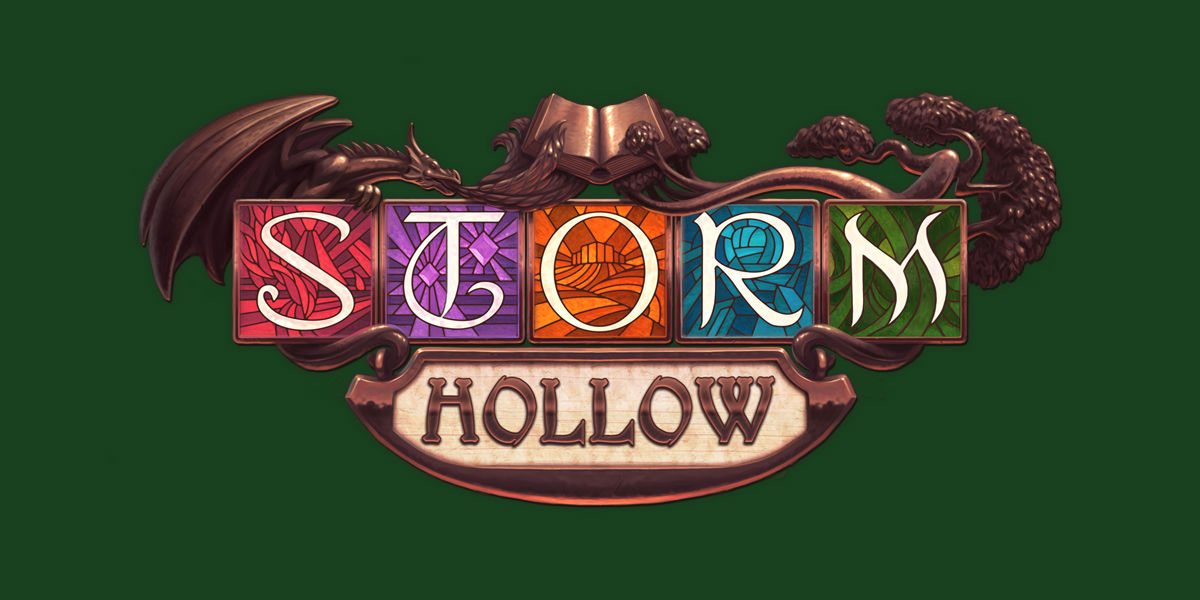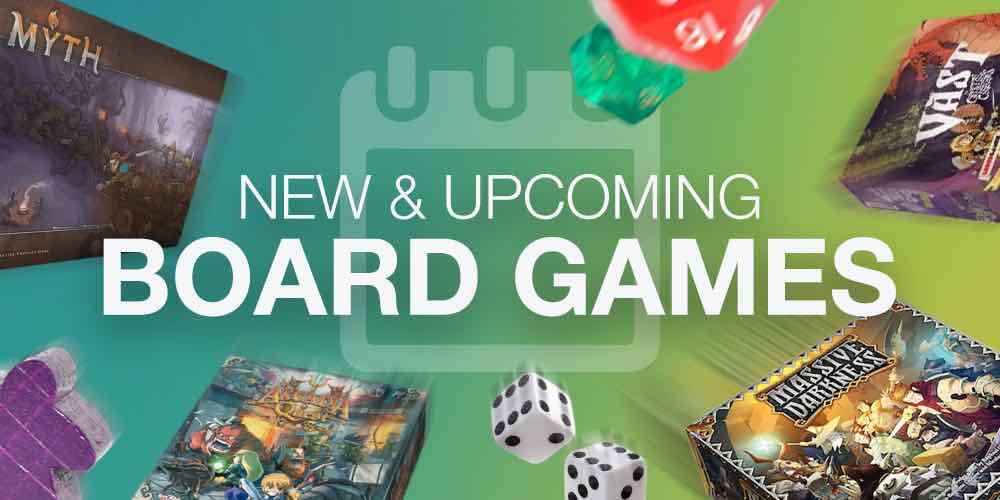 At a glance
At a glance
Dimension is an innovative, very fast-paced puzzle game. Everyone places a set of spheres according to a changing set of rules to score points. Most points wins. For 1-4 players, aged 8 and up. Games play in 30 minutes or less.
Components
Each player gets a tray with five slots to hold their spheres. There are five colors of spheres (green, black, orange, blue, and white) and each player gets three of each color. To guide the game, there are sixty Task mini-cards, which are language neutral and act as rules, and 90 tokens of various values for keeping score. To keep track of the Tasks are four overview tiles. Players can use these to remind themselves what a Task card is asking the player to do. Finally, there’s a sand timer for containing each round.
Everything in the box is of the highest quality. The spheres are textured and nice to the touch. The cards are linen and their small size is perfect for the game when it’s set up. There are little touches too. For instance, each tray has rubber feet to hold the tray stable. The box insert is well thought out and a makes setup and tear down easy.
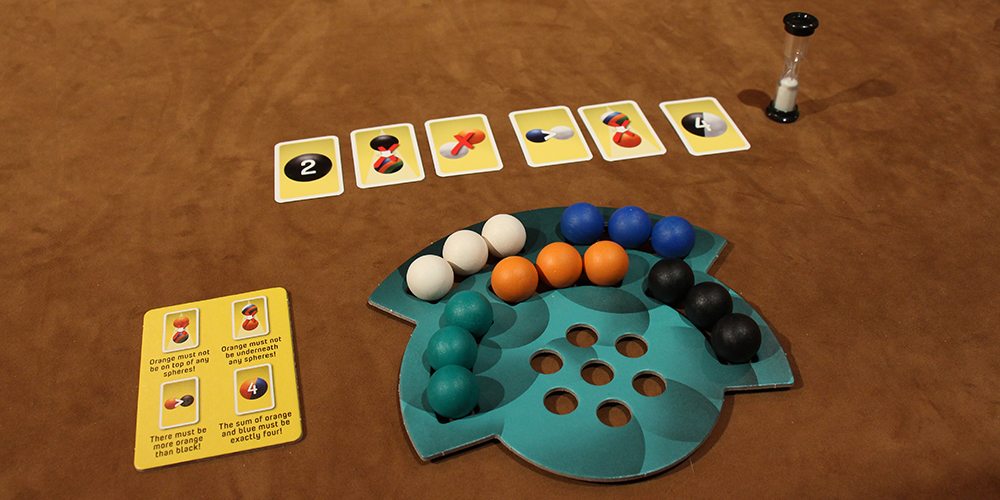
How to Play
Each player gets a tray and takes three spheres of each color, placing them in the five slots of the tray. Score tokens are handed out with everyone receiving ten points. The Task cards are shuffled and the timer is placed in the middle of the table so everyone can see it. You’re now ready to play.
One player deals out six Task cards and flips them over in the middle of the table. The timer is flipped and players rush to place their spheres on their player mats while meeting the rules laid out by the Task cards.
Task cards fall into seven categories. The first is an image of a particular color of sphere with the number one on it. This means your round should only include a single sphere of that color. Next are cards with the images of two spheres. This card dictates that whatever colors are on this card must touch each other. That is, if the card shows an orange and a blue sphere, all blue and all orange spheres must touch at least one of the other color. A similar Task card shows two spheres, but with a red “X” over them. This indicates none of the spheres of one color may touch another.
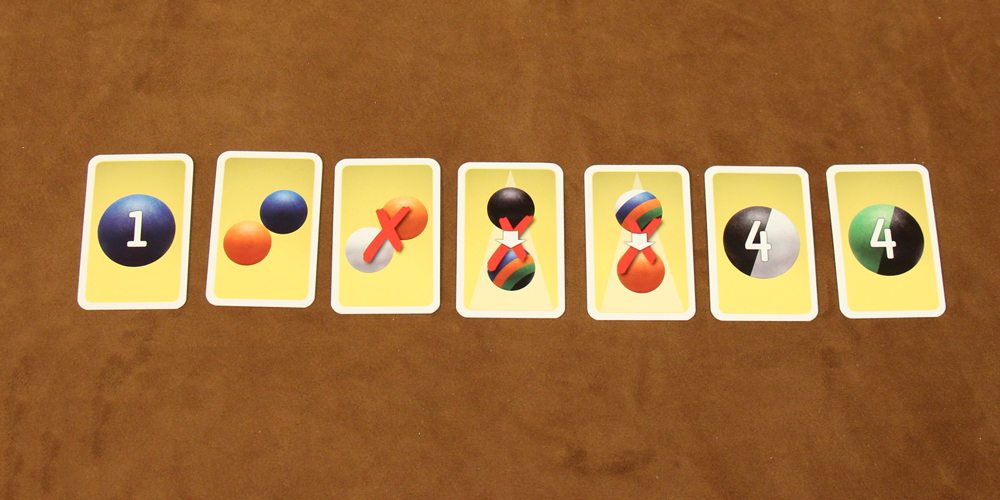
The next two cards are also similar. One shows a color sphere above a rainbow sphere with a red “X” over it. The other shows the opposite, a rainbow colored sphere above a colored sphere with the red “X”. The first card is saying that color may not be placed on top of any other sphere. The other, that nothing can be placed on top of that color. An arrow helps the player know which is which.
Finally, there is some math involved! (But it’s really easy math.) The last two cards deal with the number of allowable spheres in the round. One shows two colors of spheres with a “greater than” symbol, meaning that more of one color must be placed than the other. The final card shows a sphere that is half one color and half another, with a number on top of it. You must place exactly that number of the two colors. How that sum is reached is up to you.

Players frenetically place spheres according to the Tasks. Seven spheres are placed on the base, three at the second level and one on top. Since the Task cards are dealt randomly, sometimes Task cards will contradict each other. Then, the player will have to decide which tasks to work on and which to ignore …
… Which bring us to scoring. At the end of each round, players receive a point token for each ball on their trays. Next, a player reads through the tasks. Any player that didn’t fulfill a rule outlined in a Task has to deduct two points from their stack. Each Task is checked and scored. Those points go back to the general supply. You do not receive points for meeting Tasks. However, if a player has met all the Tasks and used a sphere from each color, they receive a bonus token. At the end of the game, the bonus tokens are worth additional points. (Three bonus tokens will get a player to even. Less than three delivers negative points, four or more puts a player in the black.)
At the end of a round, Task cards are collected, spheres are returned to the appropriate slots on a player’s tray, and new Task cards are displayed. Players play six rounds, with the player with the most points winning the game.
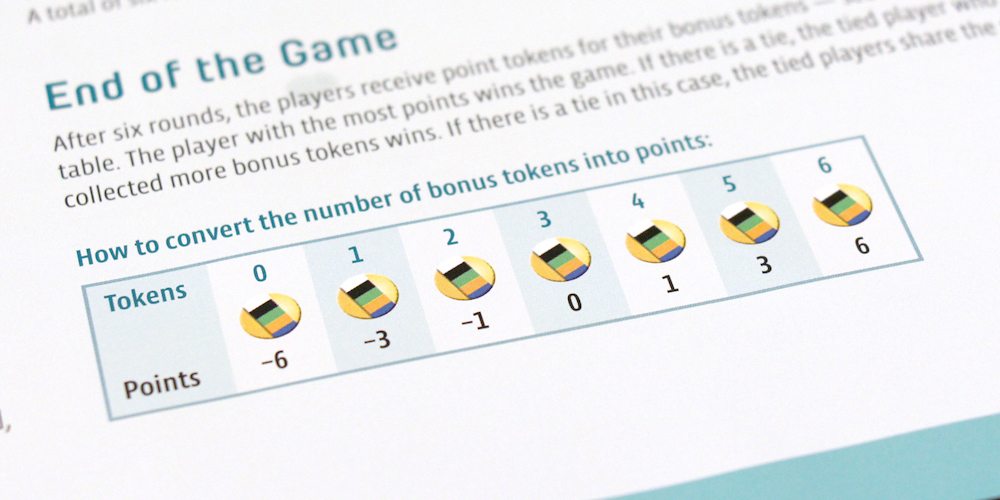
Why You Should Play It
These are some universal truths I know: gravity holds things down, everyone is odd in their own ways, there will be suffering, nothing is permanent, the client always wants their logo bigger, and, relevantly, if you go to a game convention, someone is going to be playing Dimension.
I go to my fair share of cons and I can always count on seeing being this game checked out over and over again. It’s not surprising. In the two years it has been out, Dimension has received both a Silver Honor Parent’s Choice award and a Platinum Oppenheim Toy Portfolio award.
The game is one that just about anyone can enjoy. The Task cards are challenging and with the hourglass, time is incredibly short. As players try to place eleven spheres, while meeting all the rules shown in the Tasks, and maximizing your points — it can be tough or even impossible when those Tasks conflict.

Even when the Tasks don’t conflict, the game can give you fits. It’s not uncommon to review the Tasks, throw all your spheres on your tray in a rush, and sit back with some confidence … only to realize a sphere placed at the bottom violates a Task and you have to rebuild quickly before the sand runs out.
It’s a lot of fun and one that can be adjusted to fit your group. If you’re playing with younger players, give the timer two flips each turn. If Dimension has become too easy, play with eight Task cards instead of six. If no one’s at home to play you, you can practice in a one person game.
Even though Dimension has been out for a couple of years now, it’s an important game and worth mentioning now, thanks to its unique components, fast game play, and replayability. Dimension is an outstanding family game and one to consider including in your collection.
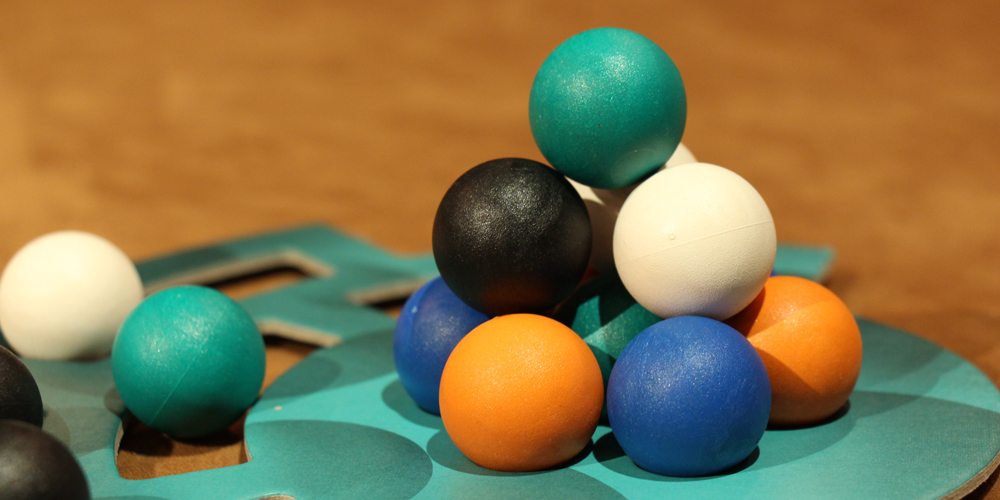
Disclosure: GeekDad was sent a sample of this game for review purposes.


